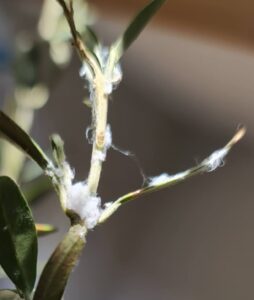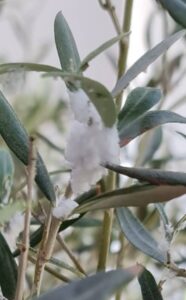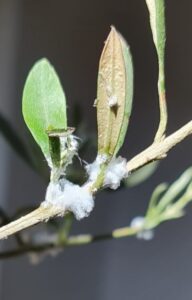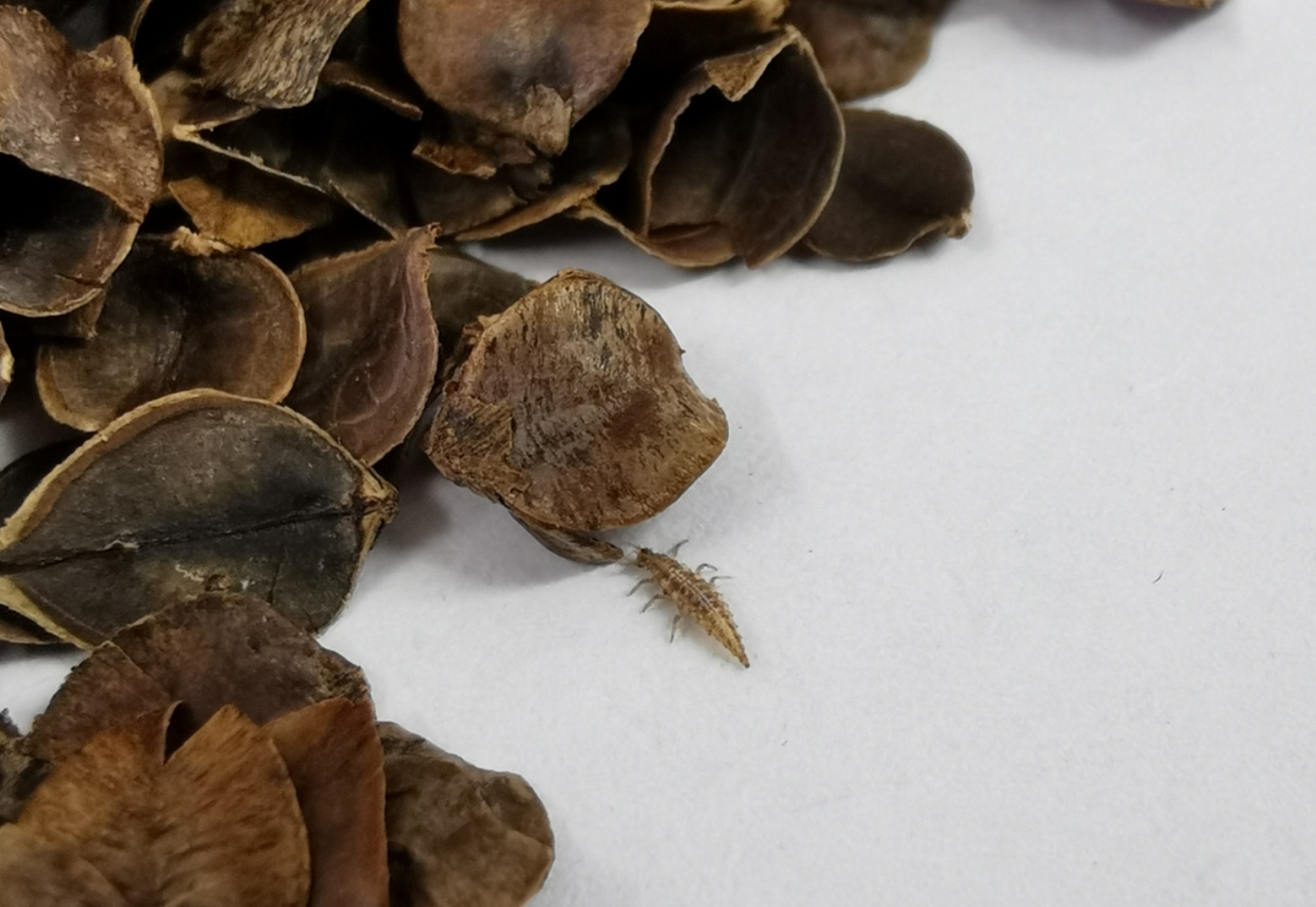11 July 2022
Customer Question – Woolly Aphids?
Q. “Many thanks for your advice and products. Here are some photos of the white woolly infestation on our olive tree, which we think is Woolly Aphids? On Saturday we caught what we think is one of the bugs – although, of course, it might be a different bug that just happened to be around at the time! I tried your ladybird larvae but to no effect. I was unsure how best to get the larvae onto the Aphids so am happy to try again, or to try an alternative approach if you think that’s best. Very many thanks.” Mark Johnson



A. Thanks for the pictures and it is woolly aphids. They are a difficult pest to control because they hide in the wool they produce and this makes it difficult for any predator to get at them – I suspect this is why the ladybird larvae did not work as they will eat woolly aphids if they can get at them. Unfortunately removing the wool is the first step, we recommend spraying with SB Invigorator natural spray and using this with a paint brush or toothbrush to break up the wool. Removing as much wool as possible will lead to better control int he 1st place and is always the 1st step. Sometimes this is enough to get rid of the woolly aphids and then you can just spray again it if re-appears. If you want to use a predator to clear any that returns then we recommend Lacewing Larvae . I would start with the SB Invigorator natural spray hopefully that will be enough, but f not you can release Lacewing Larvae – being a chemical free spray, you can release lacewing larvae as soon as it is dry and it will not affect them.

Using Lacewing Larvae to control Woolly aphids – Woolly aphids flourish between spring & autumn, infesting the trunk and branches of trees, resulting in them being covered with a fluffy white waxy “wool”. Woolly aphids over-winter in cracks in the bark and then as temperatures rise in the spring they become active and start feeding. Woolly Aphids feed by sucking sap from beneath the bark and at the same time they start to secrete their characteristic white, woolly coating. Infestations peak in the summer, when the aphids spread onto the younger shoots and winged forms develop to fly off to spread the infestation around the garden. As woolly aphids feed, lumpy growths in the bark develop and then during the winter these swellings can split due to freezing temperatures which allows fungal diseases such as apple canker to develop. To control woolly aphids, use a combination of SB Invigorator natural spray and Lacewing Larvae – Spray 1st with SB Invigorator natural spray at least TWICE to kill as many aphids as possible – it’s a good idea to brush affected areas with a stiff brush as well if you can reach. You should then release the Lacewing Larvae 7 days later into the tree to give on-going control.
Available to buy now
Sb Invigorator Concentrate
Use SB Invigorator to control a wide range of insect pests including aphids, mealy bug, wooly aphids, scale etc naturally PLUS it…
Lacewing Larvae
Lacewing larvae are natural predators of aphids and other soft bodied pests such as whitefly eggs, thrip larvae, scale insect,…
Lacewing Chamber
Position a Lacewing Chamber in your garden in late August to make sure more Lacewings survive the winter. Lacewing larvae…
